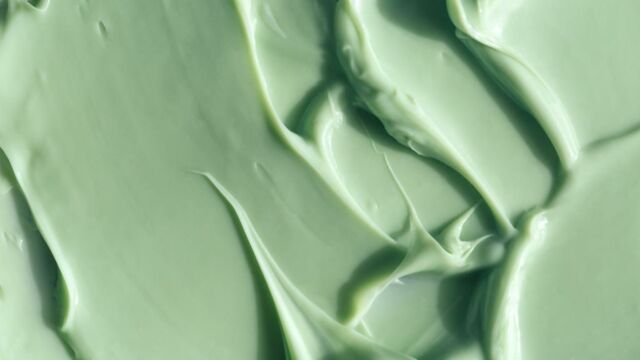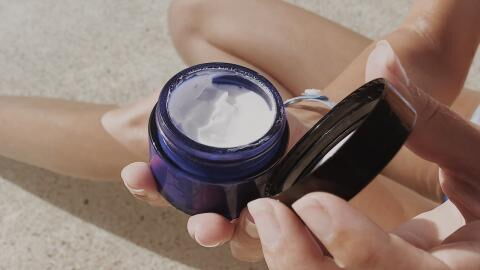We all know the basics of askincare routine; you start by washing your face and end with a moisturiser, but what about all those products in between?
Discover our latest podcast
If you want all your skincare products to have the best chance at penetrating the skin, then the order in which we layer them is critical. For example, if you layer on a moisturiser and then go in with an acne treatment, chances are your product won’t be able to make its way through the thick layer all the way to the epidermis.
Let’s be honest; some products are pricey; learning to layer your skincare effectively means your products have a better chance at doing their intended job, and your hard-earned cash won’t be wasted.
1. Cleansing
Morning or night, the first step in your skincare routine should be cleansing. At the end of the day, it is important to take off your makeup and SPF before cleansing the skin. This can be accomplished through double cleansing or going in with your makeup remover or micellar water before your regular cleanser.
In the morning, a single cleanse is generally enough to do the trick. Those with sensitive or dry skin may even find that washing their faces with water is enough in the AM.
Clay masks should also be used in this step after taking off your makeup and before cleansing. This gives the clay the chance to really soak up those oils.
2. Exfoliator
After cleansing your face, you can go in with a chemical exfoliant like lactic acid or salicylic acid. This type of exfoliant can be left on the skin and doesn’t need to be washed off. Chemical exfoliators help slough off any dead skin cells and can help in diminishing any hyperpigmentation.
Chemical exfoliants should be used at night two-three times a week maximum, as over-exfoliation can cause the skin to become damaged and sensitised.
3. Toner/ Essence
After you’ve successfully cleansed and exfoliated, you’re free to go in with a toner. Toners can be used for a whole range of different purposes, including exfoliation and hydration.
Hydrating toners are by no means necessary, but some, especially those with oily or combination skin, enjoy using them to balance the skin’s pH. Hydrating ingredients can also provide an extra bit of plumpness; somepeople even apply them up to seven times!
On the other hand, exfoliating toners should be treated as exfoliators and used 2-3 times a week.
4. Spot Treatments
Nobody enjoys having acne, but effective spot treatments like benzoyl peroxide, adapalene or tretinoin can help conquer any pesky spots.
Spot treatments should be left to absorb into the skin before going through with the rest of your skincare routine. However, if you have sensitive skin, you may want to save your spot treatment for later in your routine, where you can sandwich it between two layers of moisturiser.
Due to the harsh nature of some acne treatments, it’s also best not to use them on the same day as your exfoliants. Applying acne treatments at night can also help to avoid any photosensitisation. Still, as many of these spot treatments are prescription products, it’s best to check with your doctor for application methods.
5. Serum
Once you’ve treated those spots, you can move on to your serums. If you want to increase your serums’ permeability, try applying them to damp skin by giving your face another spritz with your toner. This is especially important when using hyaluronic acid.
During the day, we recommend using an antioxidant serum like vitamin C or niacinamide, which will work to fight off oxidative stress and boost the effectiveness of your SPF. These types of serums are also great at brightening the skin and reducing hyperpigmentation.
At night, opt for an anti-ageing, hydrating serum or even an oil to help repair the skin. But ultimately, the serums you choose should be dependant on your skin concerns.
6. Sheet Masks/ Eye Masks
Sheet masks are basically serums wrapped in cloth and should be used as such. Apply your sheet mask for 10-20 minutes before taking it off, then rub the excess serum back into your face!
7. Eye cream
Eye creams can be beneficial for people treating dark circles or fine lines in the area. If that’s you, then now’s the time to apply your eye cream.
8. Moisturiser
After letting your eye cream soak in, then go ahead with your moisturiser. Which moisturiser you use should be dependant on your skin type and what works best for you. Those with dry and sensitive skin types may find that thick moisturisers packed with ceramides leave the skin feeling at its best, especially during the winter.
Those with oily or normal skin may want to go for a lighter water-based moisturiser that doesn’t leave the skin feeling greasy. For some, even a thin hydrating oil is enough here.
9. SPF
SPF is the most critical step in your skincare routine. Even if you do nothing else, you should always apply SPF - but only during the day.
SPF not only protects your skin from UVA and UVB damage but it also helps prevent the degradation that many skincare ingredients experience when exposed to the sun, as well as any sensitisation they may cause. If outside or sitting near a window, you should be reapplying your SPF every 2-4 hours. If you need help figuring out which type of SPF to use or how to apply it, check out this article here.
Don’t forget that cleansing, moisturising, and SPF are the essential parts of your routine. Toners, masks, treatments, serums and eye creams are not necessary for good skin, but feel free to use them if they work for you. If you don’t use any of these ingredients, just skip these steps!















